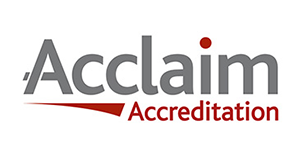
The Future of Concrete: Innovations and Sustainability Practices
Concrete has been an essential component of construction for many years, and its significance cannot be denied. However, with a growing need for implementing sustainable practices, aligning them with the future of concrete becomes the need of the hour. Modern concrete can now be produced in more ecologically friendly and sustainable ways that can fulfil the needs of modern buildings while also having less negative environmental impact because of advancements in materials science and engineering.
This insightful blog discusses the newest developments and sustainable methods influencing the future of concrete. It covers the major difficulties the sector is currently facing and talks about the various measures being taken to address them. We will examine the numerous ways that concrete is changing, ranging from innovative concrete compositions like rapid set concrete to self-compacting concrete. Also, we’ll go over cutting-edge production methods that lower carbon emissions and promote sustainability, like on-site concrete and fast-setting concrete.
Before we move to the concrete innovations that add to the sustainable future of concrete, let’s understand the current challenges of the industry.
Challenges Faced By The Concrete Industry
The concrete industry is currently dealing with numerous and complicated environmental concerns. In order to make concrete’s future more sustainable, the following critical challenges must be resolved:
- Emissions of greenhouse gases: Carbon emission is a major problem faced by the construction industry as the manufacture of concrete is a substantial source of emissions. It is estimated that the manufacturing of cement alone is responsible for 7% of the world’s CO2 emissions.
- Energy Consumption: Another challenge is the increased consumption of energy in concrete production. The heating and grinding of raw materials is a substantial energy-intensive step in the manufacture of concrete.
- Water usage: Large volumes of water are needed to produce concrete, which can strain regional water supplies in places with few water resources.
- Waste generation: A significant amount of waste is generated on construction sites, from demolition to concrete production. This waste production issue needs to be addressed for a sustainable future.
- Depletion of natural resources: Sand, gravel, and limestone are examples of natural resources used in the production of concrete. These resources are limited and the extensive use of these materials risks their depletion.
- Impacts on the environment: The manufacture of concrete may have harmful effects on the environment, such as soil erosion, water pollution, and the destruction of wildlife habitats. There is a need to keep these changes in check.
To address these issues, a multifaceted strategy involving advancements in material science, manufacturing processes, and environmentally friendly building approaches would be essential. Fortunately, there are many approaches and innovations that show promise for giving the concrete sector a more sustainable future. Some of these will be discussed in the next section.
Innovations And Sustainable Practices In The Concrete Industry
Several practical advancements have been made recently that show promise for giving the industry a more sustainable future. These are a few noteworthy instances:
Green Concrete
The phrase “green concrete” refers to concrete that uses recycled resources like fly ash, slag, or recycled aggregate. The carbon footprint of the concrete can be decreased and garbage can be kept out of landfills by employing these recycled components.
Also, the utilisation of recycled materials might have advantageous qualities, such as better workability and durability. This can improve the performance of the concrete while being safe for the environment.
On Site Concrete
On site concrete is another innovative technology that holds promise for enhancing the sustainability of the building sector. When concrete is produced on-site, it is mixed there rather than being transported from a central plant.
This helps lessen the need for packing and storage of pre-mixed concrete and also cuts down on emissions connected to transportation. Moreover, on-site manufacture enables more control over the concrete mix, which may improve the finished product’s quality and functionality. This also enables the builders to control the material used and avoid unnecessary wastage.
Self healing Concrete
It is a relatively recent innovation that has the potential to lessen the need for concrete structure maintenance and repairs. This can be highly resourceful and have a big impact on the environment.
Self-healing concrete incorporates components that can react with water to automatically fix cracks or other damage to the concrete structure. In addition to decreasing the need for expensive and disruptive maintenance, this can increase the longevity and durability of concrete structures.
Self-compacting concrete (SCC)
SSC is another cutting-edge approach that can enhance the sustainability of the concrete industry. The concrete type eliminates the need for vibration that is needed to settle the concrete or fill the mould and voids. This is due to the high flow of the material and it lowers the amount of energy needed during construction.
Additionally, SCC can lessen the requirement for specialised manpower and equipment, making it a more economical and effective alternative. This innovation can also greatly minimise waste and increase the sustainability of the building sector.
Low carbon concrete
Concrete manufacturing accounts for a sizable portion of carbon emissions in the concrete industry. Thus, the development of low-carbon or carbon-negative cement formulations is a top priority in achieving a sustainable future for concrete.
One promising approach is to substitute conventional materials like limestone that have a higher carbon footprint. The same technique is used in producing low-carbon concrete as it uses materials such as volcanic ash or industrial wastes.
Rapid set concrete
Rapid setting concrete is also a great innovation that can lessen the carbon footprint of the concrete industry. The fast setting concrete is a special kind of concrete that dries out significantly more quickly than regular concrete, usually in a few hours. As a result, less energy is needed to cure the concrete and more expensive formwork and support structures are not required.
Moreover, a quick curing period can facilitate a more effective construction procedure that uses less manpower and equipment. It is ideal in situations like emergency repairs or infrastructure projects, where time is a crucial consideration.
Parting Words
Innovative technologies and sustainable business practices are key to the future of concrete. Many environmental issues, such as carbon emissions, energy use, trash production, and the loss of natural resources, are faced by the concrete sector. However, there are varied sustainable concrete solutions like green concrete, low-carbon cement, self-healing concrete, and rapid setting concrete that can promise a sustainable future. Do your bit for the environment by hiring a professional and asking them to use these sustainable options in your next construction project.
















